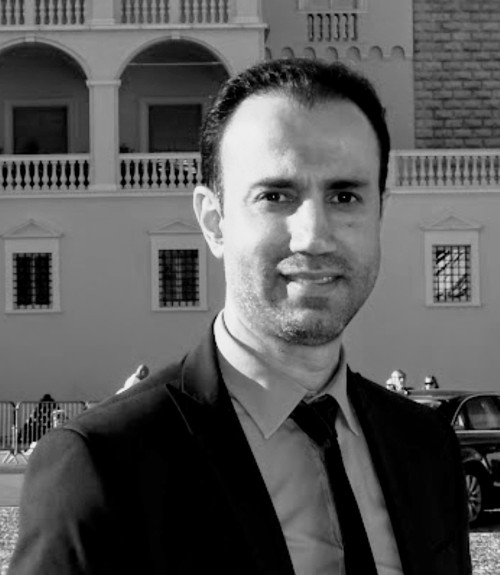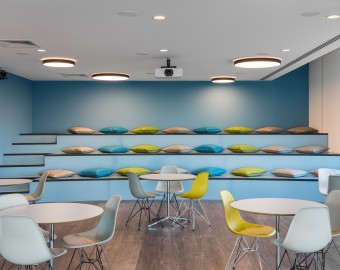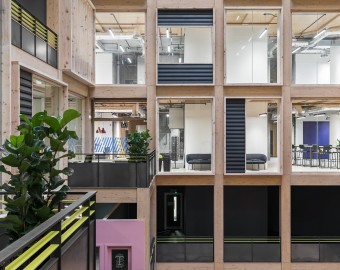Meet… Reza Moosavi
In the latest of our ‘Meet…’ series, we chat to our Projects Partner, Reza Moosavi, about his role in successful fit-out projects, and how he achieves results on time and within budget…

Q&A with Reza
What’s your background/experience to date please?
I trained as an architect. I have a master's degree in architecture and I also have a PhD in management. I got my master's degree from the University of Tehran, Iran, in 1999 and my PhD at the University of Waterloo, Canada, in 2008.
I’m a chartered architect with Royal Architectural Institute of Canada (RAIC) as well as Royal Institute of British Architect (RIBA), and a member of the American Institute of Architects (AIA), a full member of the Association for Project Management (APM) and a professional member of the International Code Council (ICC), which is the leading global source of model codes and standards and building safety solutions.
I've worked on three different continents and in around seven countries during my career in last 25 years, and now I’m bringing all that experience to bear for The Workspace Consultants’ clients.
Can you briefly summarise your role?
I effectively bring together the different parties in a construction project and ensure they’re all working together: construction companies, contractors, consultants, lawyers and clients. As an architect I understand the buildings inside out, and as a certified PM, I know how to challenge people and how to get the best out of them.
I manage projects systematically, using a proper process from initiation through planning to execution. I can get involved from day one (the early initiation stage) to engage as much as possible with the client and understand their objectives and how they want to approach the project. By managing the pre-con stage we avoid any scope gaps, which can cause time and cost creep, and by negotiating with the landlord we can ensure that everything meets with their approval too.
I can have oversight of the PQQ to make sure that the client understands our objectives that the right contractors are tendering for the project. I also work closely with our design team to ensure everything’s included and the client’s requirements are met.
How do you manage clients?
Projects only work if everyone’s pulling in the same direction, including the client, so I am always communicating, and always chasing information and sign-offs so we remain on track.
To have a proper project governance will help to manage the projects more effectively as negotiations can take 5-6 months before we even to get to the site. We track and manage all the projects’ interfaces, so we know exactly what’s going on, and that helps us manage clients’ expectations.
How do you prepare tenders?
It’s a case of bringing together lots of information from different sources to create a tender pack. I’ll gather information from a variety of sources, compile it and check it all for any discrepancies. Ultimately, the tender pack needs to be flawless if we’re to have a successful project.
In terms of your role, presumably a key contribution is in the pre-contract phase?
Yes indeed. If the client wants to go ahead after we send out the tender package, there’s a lot of back and forth with the contractors to make sure we get the proper response back from them. And when we receive a tender submission, we go through it in fine detail. We do a cost comparison to make sure everything is covered, from architecture and mechanical & electrical to plumbing finishes, in fact whatever is required to make the building as per the visuals we saw in the presentation.
One other activity is to sit down with the contractors and the client again to carry out cost negotiations and value engineering to make sure we’re getting the best value for money. We can always use similar quality but less expensive materials which will give the same look, but that isn’t necessarily always the best solution.
We then move onto the legals, which is another crucial aspect. Again there’s a level of back and forth here to ensure that everything’s acceptable for the contractors and the client and we have all the proper appendices to the contract and SOA and Contract Particulars are in place.
What happens in the execution phase?
On some projects I’m involved from start to finish, but most of the time I’m running the front-end engineering so I can hand it over to our team to finish. During execution we do a fortnightly valuation so that everyone who needs to be paid is paid on time and the client ensures that they pay as per the actual progress on the site.
We have a centralised project management office to oversee all projects and if we can facilitate or expedite the process, we’ll do so. When the project is approaching the end we have a formal procedure for practical completion and a final account to ensure everything’s been done. Once it’s signed off, we’re involved for the next 12 months, which we call the rectification period.
What are the benefits of your approach?
I believe that the most important responsibility of a Project Manager is to manage expectations, mitigate the risks and avoid cost and schedule overruns. We focus on making sure the client gets the best value for money, in particular in avoiding a double charge because they already have an office and want to overlap from there and move to the new location without paying twice and make this transition as smooth as possible.
And finally, how do spend your spare time?
I read a lot as I’m very interested in Eastern philosophy and Persian literature.




